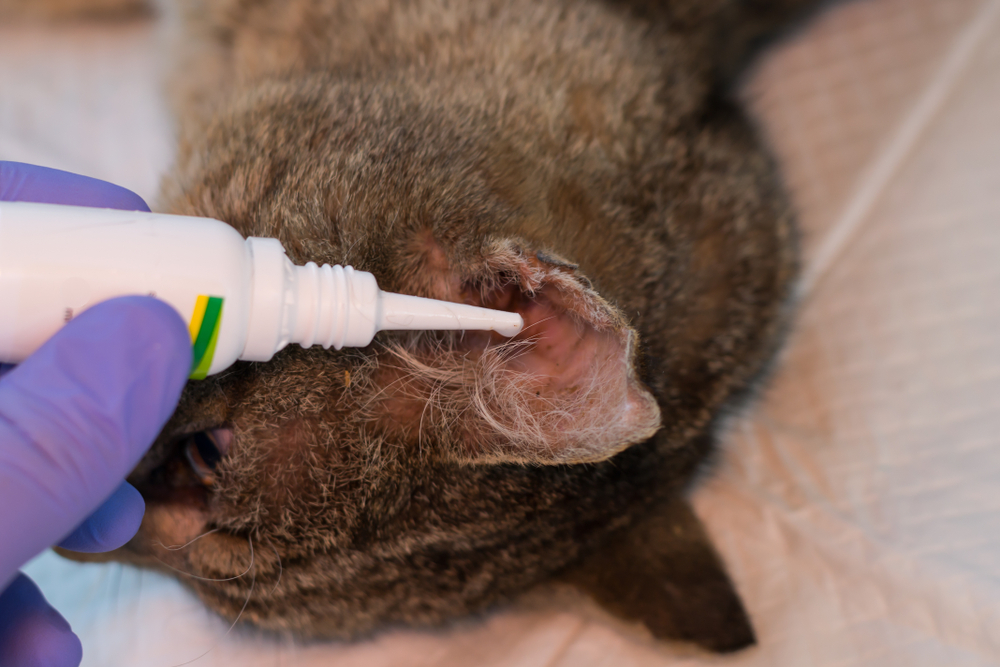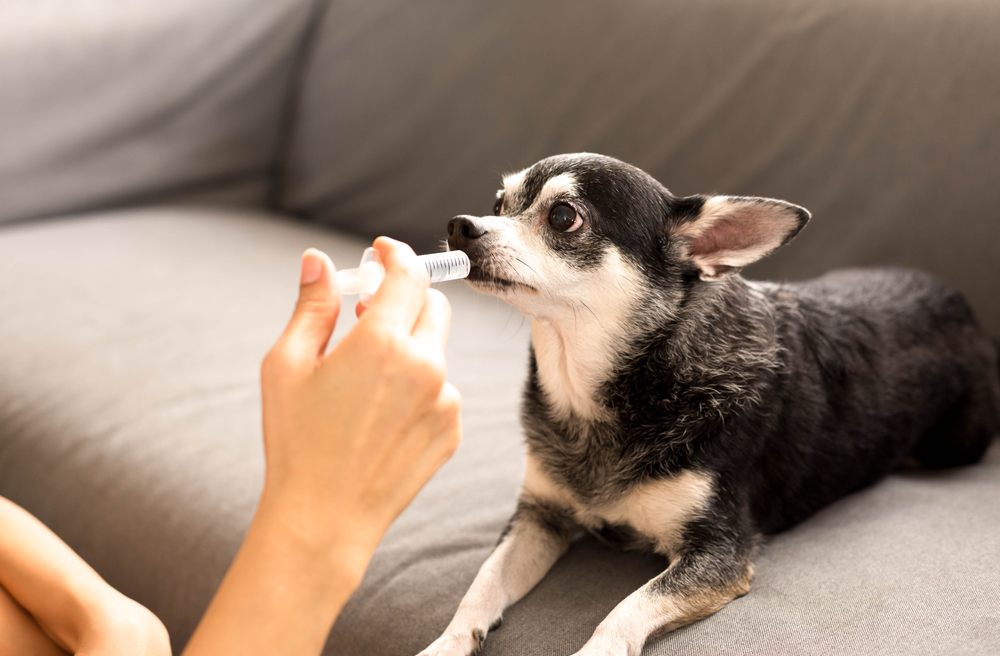Medicating your pet is often no easy task, but it is essential for fighting off infection, alleviating pain, managing disease, or guarding against parasites. Fortunately, many tips and tricks are available that help ensure you can medicate your pet as needed, whether your furry pal needs a specially compounded medication with an unusual flavor combination or a soft towel wrap to provide gentle restraint. Follow our Peak City Veterinary Hospital team’s guide to administering medication to pets, and soon you’ll be medicating your furry pal like a pro.
How to administer oral medication to your pet
Oral medication generally comes in a liquid or pill form, such as tablets, capsules, or chewable medications. In some cases, these medications can be split, crushed, and mixed into canned food or other tasty treats. If the medication must be given intact, try hiding the pill in a moldable soft treat, meatball, peanut butter, cheese, or other favorite snack. Ideally, your pet will gulp down the special treat, especially if the snack is given before a meal so they’re hungry, or if other pets are eagerly awaiting their own treat.
If the medication is not meant to be chewed and your pet is cooperative, you can “pill” them by placing the medication at the back of their throat for them to swallow. To pill your pet, grasp the top of their muzzle behind their canine teeth and tilt their head up. Their jaw should naturally drop open but gently open it further by putting pressure on the bottom incisors with your dominant hand’s ring and little finger. Quickly place the pill as far back over the tongue as possible, ideally past the hump in the back of the mouth. Close your pet’s mouth, then gently massage their throat or gently blow air on their face. Pets typically lick their nose or lips after they’ve swallowed a pill.
Oral liquid medications are typically best administered with a dosing syringe versus a dropper to ensure the most precision and control. When giving your pet liquid medication, aim for the back of the cheek pouch, administering the medication into the pocket between the teeth and cheek. If your pet does not have much loose skin, or if they tend to drool out most of the medication, place the syringe tip behind the canine tooth and slowly squirt the medication directly onto the tongue. Avoid forcefully squirting the medication toward the back of your pet’s mouth, as this can lead to aspiration.
How to administer topical medication to your pet
Topical treatments include sprays, ointments, liquids, or gels that are applied directly to your pet’s skin. Wear gloves to prevent your skin from absorbing the medication, as some veterinary drugs can cause adverse side effects in people. Whether you are treating a wound, administering flea and tick prevention, or applying a transdermal medication to an ear flap, ensure your pet does not lick the area until the medication has been absorbed. You may also need to separate your furry pals to prevent grooming among pets. You need to prevent an unmedicated pet’s tongue from absorbing the medication from your medicated pet’s fur or skin.
How to administer eye medication to your pet
When administering eye medication to your pet, they may be more comfortable with you standing behind them rather than in front of them. Cats and small dogs typically respond well to being wrapped in a towel for restraint, while large dogs often do well when their owner stands behind them.
To administer eye medication, ensure your hands are clean, hold the eye drop or ointment bottle in your dominant hand, and tilt your pet’s head up with your nondominant hand. Steadying your hand against your pet’s cheek, gently pull the lower eyelid down with a finger, then apply the drops or ointment into the “pouch” the lower eyelid forms. Allow your pet to blink to spread the medication across the eye.
If your pet requires drops and ointment, or multiple medications of the same formulation, wait between administering each medication. Depending on the medication types, you may need to wait as much as 15 to 20 minutes between applications, and ensure you apply the medications in the correct order.
How to administer ear medication to your pet

Most ear medications require a clean ear to be effective, but certain medications need to be put in a dirty ear, so always double-check the instructions before administering. When administering ear medication, ensure the ear is dry before applying drops or ointment. Next, gently grasp the ear tip and pull the ear flap up to straighten out the ear canal. Apply the appropriate amount of medication without touching the bottle’s tip to the ear to prevent contamination. Continue to hold the ear upright as you massage the base of the ear to work the medication deep into the ear canal.
If you’re struggling to medicate your feisty feline or persnickety pooch, contact our Peak City Veterinary Hospital team to discuss additional tips and tricks.









Leave A Comment